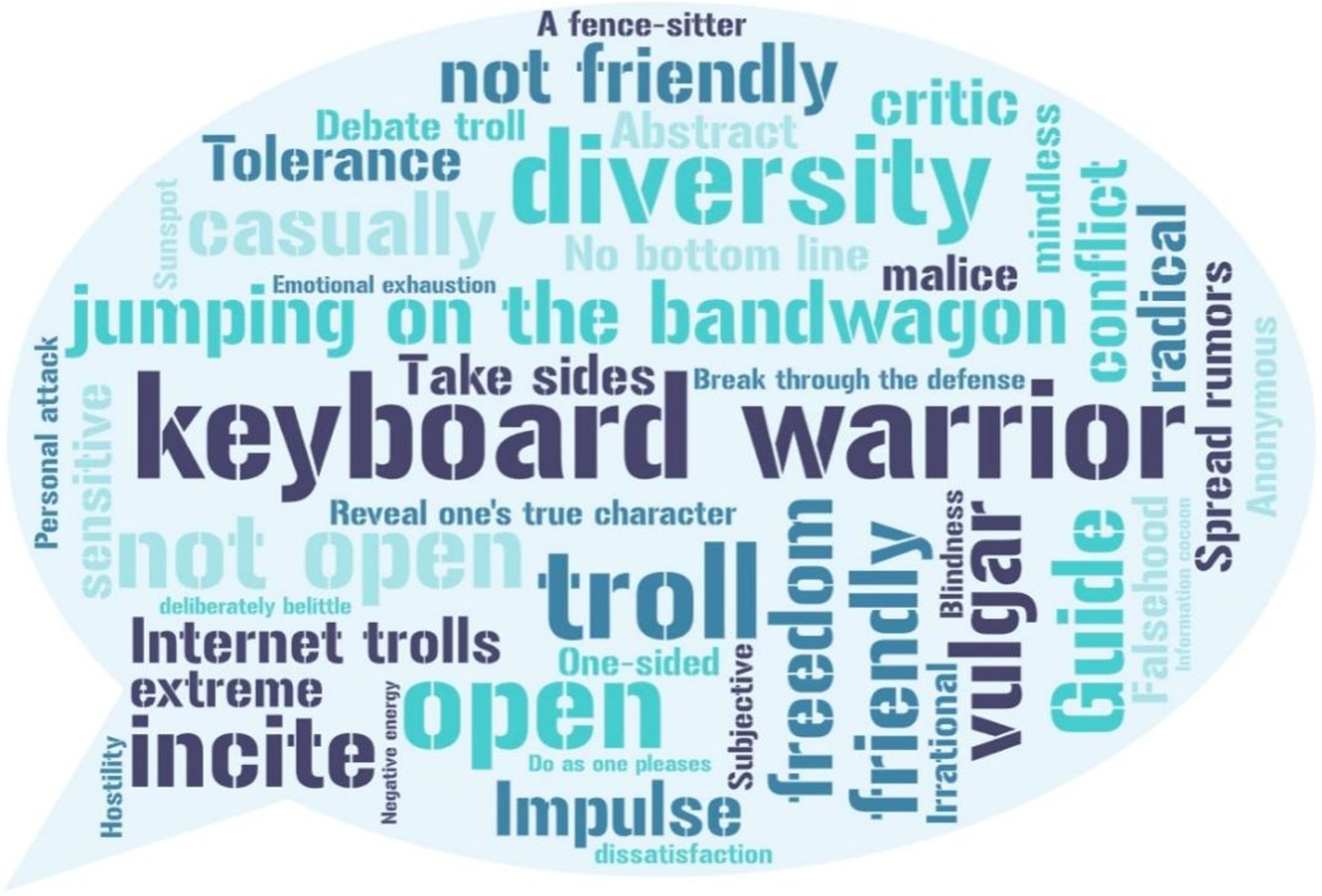A Research on the Online Expression Practices of College Students Under the Background of New Media Empowerment: Taking the College Campus Wall on WeChat as an Example
Abstract
New media empowerment has enhanced college students' self-awareness and endowed them with more discursive power. They can utilize new media to express themselves and speak freely. However, in real situations, this is not necessarily the case. When engaging in online expression, college students also encounter numerous obstacles. This has caused them to gradually transition from "active expression" at the beginning to "silent screen-watching", thus plunging into a deeper sense of loss and solitude. Meanwhile, they have explored a series of self-regulation methods and have not abandoned their efforts to resist. Nevertheless, merely relying on these measures is insufficient if we hope to help restore the gradually weakening voices of college students in online expression. It requires the combined efforts of various parties, including individuals' courage to face challenges, the guidance of online communities, and the regulation of the government. Only in this way can we maintain the harmony and stability of the online expression environment and truly enable college students to fully showcase themselves and express bravely in the tide of new media empowerment.
References
[2] Hegel, G. W. F. (1979). The phenomenology of spirit, Part I. The Commercial Press.
[3] Marx, & Engels. (1995). Selected works of Marx and Engels, Volume I. The People's Publishing House.
[4] Meng, W. (2019). The subjectivity of the audience in Internet communication. The Young Journalists, (33), 11-12.
[5] Xia, H. (2007). The development and significance of the subjectivity of online audiences. Social Sciences in Gansu, (4).
[6] Black, S. B. (1976). Empowerment: Social work in oppressed communities. Columbia University Press.
[7] Jiang, H. (2016). Reflections on the developmental positioning of higher continuing education in the context of media empowerment. Studies in Continuing Education, (2), 4-6.
[8] Zhao, A., & Zuo, L. (2019). The dualism of college students' identity construction within the context of self-media empowerment. Research on Contemporary Youth, (2), 91-97.
[9] Cai, Q., & Nie, H. (2024). Can social capital overcome the isolation dilemma? A research on the new media empowerment of rare disease communities. Research in Journalism and Communication, (8), 96-111, 128.
[10] Cui, Z. (2018). The philosophical dimensions of cyberspace: From technology and interests to ethics. China Fortune Publishing House.
[11] Yan, G., & He, Z. (2022). Publicity and anti-publicity: The paradoxes and resolutions of public participation in cyberspace. Theory and Reforms, (6), 133-146, 161.
[12] Wang, N. (2022). The discourse expression paradigm of contemporary youth in cyberspace: Generation, functions, and guidance. Studies in Ideological Education, (12), 82-87.
[13] Zhu, R., & Li, W. (2024). A comparative research on the expressions in the online and real-world public opinion fields within the "fan circle" phenomenon. Contemporary Communications, (6), 62-68.
[14] Liang, S., & Cao, D. (2022). "Social death": Emerging trends of youth cyberbullying and governance pathways. The Frontline of Social Sciences, (4), 234-240.
[15] Zhou, B., & Lv, S. (2014). An empirical investigation into college students' online opinion expression and its influencing factors: With "the spiral of silence" and "opinion climate perception" at the core. Contemporary Communications, (5), 34-38.
[16] Yu, X., & Wang, Y. (2014). A study on the influential factors of college students' public opinion expression in the context of social networks. Research on Chinese Youth, (10), 97-104, 96.
[17] Qin, Y., & Xu, L. (2017). An analytical exploration of the construction of a guidance mechanism for college students' online opinion expression in the new media era. Studies in Ideological Education, (2), 88-91.
[18] Rogers, E. M. (2002). The diffusion of innovations (4th ed.). Central Compilation & Translation Press.
[19] Rheingold, H. (1993). The virtual community: Finding connection in a computerized world. Addison-Wesley Longman Publishing.
[20] Liang, C. (2019). Research on new media empowerment and citizen expression [Doctoral dissertation, Chongqing University].
[21] Yu, G., & Ma, H. (2016). The new power paradigm in the Internet era: "Relational empowerment"—Reconfiguration of social relations and transformation of the power structure in the context of "connecting everything". The International Journalism Community, 38(10), 6-27.
[22] Noelle-Neumann, E. (2013). The spiral of silence: Public opinion – The social skin of ourselves. The Publishing House of Peking University.
[23] Beck, U. (2004). Risk society. Yilin Press.
[24] Turkel, S. (2014). Alone together: Why we expect more from technology and less from each other. Zhejiang People's Publishing House.
[25] Cui, X. (2024). "Cyber lovers": Research on emotional communication in human-machine interaction within the interactive ritual chain. The Research of New Media, 10(19), 7-11.
[26] Liang, D. (2025). "Raw life" vs. "fancy-finished moments on social media": A psychological capital perspective on youth social performance. Research on Chinese Youth, (2), 87-94, 77.
[27] Ji, L., & Xia, Y. (2025). Activation and sharing: Research on the emotional production of nostalgia within the framework of spatial theory. News Enthusiast, (3), 38-42.


This work is licensed under a Creative Commons Attribution 4.0 International License.
Copyright for this article is retained by the author(s), with first publication rights granted to the journal.
This is an open-access article distributed under the terms and conditions of the Creative Commons Attribution license (http://creativecommons.org/licenses/by/4.0/).









1.png)














